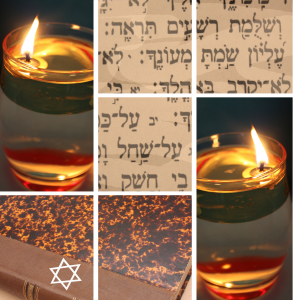The first five, at the beginning of the period, were like warning shots – breaking of the tablets, laying siege of the city walls, cessation of the offerings, the burning of a Torah scroll. These were all things that could have been stopped or rectified. The 5 of Tisha B’av, however, were calamities of finality – a decree that the generation of the desert would all die there, the final destruction of both Temples, etc.
In my opinion one of the most important points to focus upon during this time is an idea which permeates the writings of our sages and is a foundational understanding of our diaspora history, all beginning with the above calamities.
Tisha B’av is, despite its sadness, a “holiday”. It is referred to by Jeremiah as a “moed”, which is Hebrew for holiday, “…it is called upon me as a moed, to break my youtha”. This seems to be as antithetical to a holiday as can be! Moed literally means a “meeting place”; a holiday is a time that we are elevated to “meet with God” in our higher state. That is why our holidays, beginning with Pesach, are based upon miracles. The Hebrew for miracle is “nes”, which literally means “elevation”. A miracle elevates us to a place where we can connect to God, hence a miracle brings us to a moed. We are able, through the miracle, nes, to view things and connect at an elevated level.
On Tisha B’av there were, in fact, miracles performed as well. At the time of the destruction of the 1st Temple the Babylonians found the cherubim on the ark embracing each other and paraded them through the streets to shame the Jews – that in their holiest place they feature a male and female in loving embrace.
Truth be told, that embrace was the greatest joy of the Jewish people, as the cherubim represented the embrace of God and Israel. There was a standing miracle that the degree of their embrace was a barometer of the relations of God and Israel; although there were no moving parts they would swivel in or out depending on the Jew’s piety. The fact that they were embracing at the time of turning our back to God and our destruction was a miracle within a miracle. It was to expose our nakedness.
This is a new type of miracle, a “miracle for the bad”!
A similar miracle occurred at the time of the destruction of the 2nd Temple when Titus pierced the curtain before the Holy of Holies and it gushed blood, allowing him to think he had “killed God”. Another “miracle for the bad” which revealed the extent that the Jews had severed the connection between the upper and lower worlds, the very connection that canopy represented.
Miracles for the good, splitting the sea, etc, obviously catapult us to higher levels of connection. Bad things which befall us, like hatred, exiles, destructions and massacres, don’t seem to bring us to higher places. But when we view the miraculous perspective of these occurrences, to the extent they are completely inexplicable in any human terms, shows us that we are connected to something higher and can potentially elevate us through that realization.
The level of fixation on the Jewish people throughout our exile, up until the complete fixation of the world upon Israel today, makes no sense. The entire world has nothing to worry about besides a piece of land around the size of the Dallas-Fort Worth Metroplex and 2/3 the population of New York City! Article 7 of the United Nations “Human Rights” Commission mandates this committee to hold a discussion on the Israel-Palestinian conflict at every meeting! Beginning with the destruction of the Temples we have witnessed and suffered pogroms, inquisitions, blood libels, a Wansee Conference and finally the unspeakable holocaust…not ending there but suicide bombings, BDS, condemnation after condemnation from the UN – when other nations are murdering hundreds of thousands like Syria today…it doesn’t matter, it all about the Jews. It may be a “miracle for the bad”, but a miracle it is!
My late mentor, Rav Moshe Shapiro ob’m, once pointed out that the sum total of all the reasons and rationales for anti-Semitism provided by sociologists, historians and scholars will possibly account for 5% of what has actually transpired. What about the other 95%?! A miracle! Albeit a “miracle for the bad”, but a miracle just the same!
We don’t have the space to discuss the nature or the “why” of these miracles. For now, let it suffice to say that it would be far worse for God to have forgotten about us, to have simply given up on us and no longer care, than to be involved with us…even in a way which seems as bad as can be. A child would rather have his parent angry at him than not care about him at all.
Let us remember that the destruction was in the month of Av, which means “father”, because – when we witness this inexplicable behavior towards us it reminds us that this is all happened – and is happening – precisely because we have a Father!
Let us focus on this during this time and, perhaps, the lessons we will learn will bring and end to the need to teach us any more!
Sincerely,
Rabbi Yerachmiel Fried

